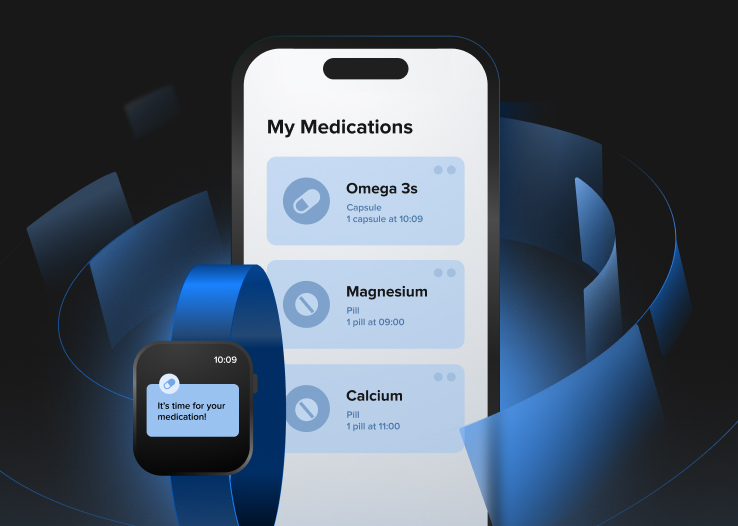Since the official introduction of the term LGBTQ in the 1990s, and further expanded to LGBTQIA2+, awareness, openness, and acceptance of gender and sexual diversity has continued to spread, even in culturally conservative countries.
At Star, we pride ourselves in the assurance that all staff and clients will receive the highest level of respect and inclusivity regardless of race, religion, sexuality or identified gender. When consulting and developing solutions for our clients, Star continues to ensure that all populations are taken into consideration to ensure solutions will meet the needs of all patients.
Entering Pride Month, as Healthcare IT Consultants and solution providers, we are bringing forward a discussion on LGBTQIA2+ communities and the importance of ensuring that clinical systems are developed or enhanced to support both the psychological and physiological considerations relevant to individuals within these communities.
It doesn’t take complex internet searches to find that LGBTQIA2+ in healthcare returns hundreds of both scholarly (peer-reviewed) and independent articles on the subject. Many of the top returns center on the importance of, and continued education of inclusivity and unbiased approaches to the interaction and treatment of patients within these marginalized communities.
While it is acknowledged sensitivity and awareness training is critical, if clinical management systems are not equipped to capture the specific information in the patient profile and other patient health data, it becomes problematic for clinicians to get the appropriate triggers to know when to apply their training with specific patients and can lead to challenges with diagnoses and interventions.
Gender field in Clinical Management Systems
In many clinical management systems, choosing a patient’s gender is still limited to: Male / Female / Other. Until recently, it was argued that this field was specific to ‘Biologic Sex’ of the patient as it was critical in diagnosis and interventions of conditions, interpreting lab results (normal range values can differ between biological males and females), and even prescription medication doses (metabolic rate of absorption can be different between male and female). Academic research now recognizes that there is great value to including additional fields in the patient data. These include: Gender Identity, Sexual Orientation, with the biological sex information. In 2022, the Health Level 7 (HL7) Organization formally included these fields in their clinical standards and messaging formats. Unfortunately, not all clinical management systems have enhanced their systems to incorporate or accept these data fields. As the healthcare sector continues to place the highest priority on interoperability, the inclusion of these data fields is a critical element to ensure the proper diagnosis, intervention and proper monitoring of the LGBTQIA2+ community.
Psychological disparity amongst marginalized populations
Published research has shown that LGBTQIA2+ patients have experienced or have high anxiety about discriminatory treatment when seeking access to healthcare services. It has been identified that the requirement to disclose highly sensitive information about sexual and gender history, regardless of whether it relates to personal health concerns raised during each healthcare encounter, causes continued discomfort; not knowing if that specific healthcare provider will punish, refuse treatment, humiliate, or discount health concerns when speaking openly about their orientation or identity.
A number of countries and associations have initiated the directive for Sexual Orientation and Gender Identity (SOGI) information to be collected within Clinical Management Systems, such as Electronic Health Records. It is believed that if this information is permanently stored within a patient’s record, it will help reduce the stress of having to openly communicate this information with each new provider. The inclusion of preferred pronouns within the medical record will also go a long way to promote an inclusive atmosphere within the health system when the LGBTQIA2+ population is addressed according to their preference without the need of constantly requesting or reminding their providers during a health encounter. It is important that if this information is available in the primary care (family physician’s) EMR, this data should be included in the HL7 message when sending eReferrals to specialist, Lab or Diagnostic Requisitions, or any information electronically to the patient’s circle of care.
The addition of SOGI information within electronic medical records can go far beyond the ability to encourage a more inclusive atmosphere in healthcare. It can provide clinicians critical triggers for preventative care and pre-diagnosis rationale. It has been well documented that individuals within the LGBTQIA2+ community have unique needs and are more prone to different conditions than their heterosexual and cis-gender counterparts. Studies have shown that these individuals can experience the onset of mental health issues at youth, which can carry on through their adult life. Embarrassment, fear of rejection, ridicule, or refusal of treatment by healthcare providers leads youth to navigate their health outcomes on their own. This leads to an individual’s higher risk of depression and anxiety which has shown to cause higher probability of obesity, substance abuse, isolation and suicidal thoughts, to name just a few. These behaviors can compound further health issues such as STIs, cancers, kidney disease, diabetes and cardiovascular diseases.
If sexual orientation and gender identity information is included in the patient’s electronic health record, a clinician can proactively order the appropriate screening for certain conditions, but also be more aware of the potential contributing factors and offer support for seeking mental health services. For transgender individuals who have completed gender-affirming surgery or are in later stages of hormone therapies, this information will ensure that a clinician is aware of a patient’s status and not potentially miss any appropriate diagnostic tests based on assumptions rooted in physical appearances.

Physiological considerations with Transgender / Nonbinary individuals
In the report, “National Estimates of Gender-Affirming Surgery in the US”, published August 2023 in the National Library of Medicine (PubMed), research showed that Gender-Affirming Surgery nearly tripled from 2016 to 2019. Similarly, a Reuters® investigates report “Putting numbers on the rise in children seeking gender care”, published in 2022 also reported a surge in the diagnosis of youth with gender dysphoria, leading to a significant growth in gender-affirming hormone treatments.
Focusing on these targeted groups within the LGBTQIA2+ community, this is where the introduction of SOGI information into clinical management systems may be most significant.
The introduction of gender-affirming treatments modifies some individuals’ physiological parameters. For instance, in the published study in 2017 “Physiologic Response to Gender-Affirming Hormones among Transgender Youth”, although it states little has been reported about transgender adolescents and their response to hormone therapy, the study did recognize an increased insulin resistance and fasting glucose were both noted as a ramification for female to male (FTM) individuals taking hormones. Male to female (MTF) youth showed statistically significant changes in HDL, potassium, prolactin and hemoglobin to name a few.

When considering that blood tests offer different normal reference ranges for biological males and females, it is critical that electronic medical records and Laboratory information systems include SOGI information which can then be applied against the results for a more accurate interpretation of whether a result is abnormal. However, for these analytics to calculate properly, it would then also require specific information in the SOGI to include not only the gender identity, but also the gender-affirming treatment status and date of initiation. If the systems only use the current gender field (sex at birth), there is a greater chance of receiving false abnormalities when interpreting the results.
It has been recognized by many authorities in this area that more long-term research is needed on areas of proper surveillance post gender-affirming treatments. For instance, in the published report, “Transgender Mastectomy: Incidence of High-Risk pathologic findings and the need for postoperative cancer surveillance” published May 2022, it was determined that there was an elevated risk of breast cancer for FTM transgender patients even after top surgery (mastectomy).
Similarly, with MTF gender-affirming surgeries, the prostate is not removed. The World Professional Association for Transgendered Health and the Endocrine Society both recommend that transgender females should follow the same prostate cancer screening recommendations as cis-gender males.
The need for SOGI information remains critical to ensure that these data fields are used to trigger preventative screening based on the Gender Identify field and NOT just the standard Biologic Gender field, typically used for clinical decision support tools to identify suggested screenings.
The development of AI tools for diagnosis and predictive medicine
Over the last couple of years there have been significant advancements in artificial intelligence and how it may transform patient care. In several different surveys and research studies, physicians embraced various areas in the clinical workflow in which AI can improve processes, speed up diagnosis and intervention decisions, but did have concerns on the idea that artificial intelligence can be a “black box” without the necessary transparency on how AI algorithms are developed to ensure accuracy.
Referring again to the need for ensuring SOGI information is included in clinical management systems and the examples provided, if this information is not present in the data feeding “big machine learning”, there could be significant impacts, such as missed or incorrect recommendations during the diagnosis and intervention stages.
Regardless of the population size possibly affected, if AI is to be accepted, it must have the means to support all clinical cases. It is therefore important that MedTech companies developing new AI solutions for the healthcare market are considering all critical data elements needed to support proper clinical decision making.
Conclusion
There is no doubt that continued education on cultural competence in the care for LGBTQIA2+ patients is critical to improving both the psychological and physiological outcomes for these individuals. Clinical healthcare IT solutions has been the proven driver for many improvements in the healthcare sector, and the inclusion of SOGI data within clinical management systems will go a long way to improve the health outcomes of this marginalized population.








